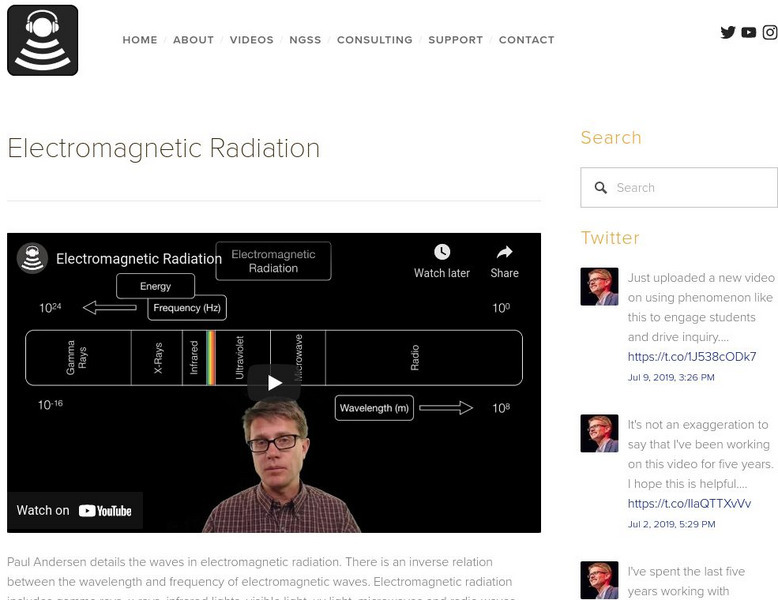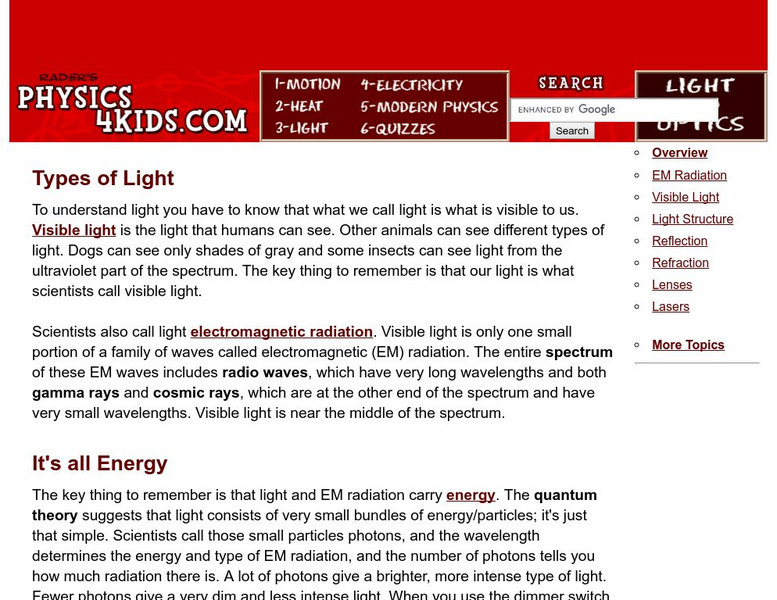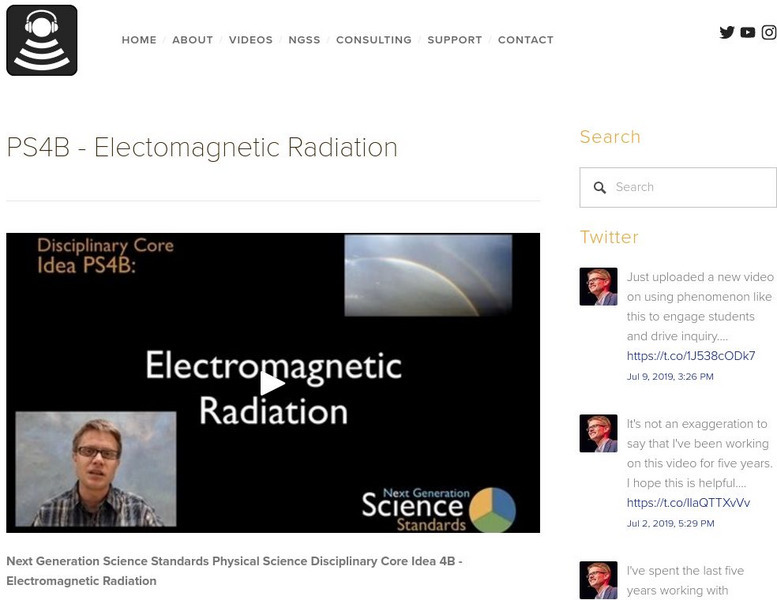Bozeman Science
PS4B - Electomagnetic Radiation
What do science scholars need to know about electromagnetic radiation? Get in depth with standard PS4B from the Next Generation Science Standards. The narrator discusses the parts of the electromagnetic spectrum, wave and particle...
Kurzgesagt – In a Nutshell
Death From Space—Gamma-Ray Bursts Explained
A gamma-ray burst might have caused the mass extinction 450 million years ago. The video introduces the concept of gamma rays and gamma-ray bursts. Then it explains what happens if they were to hit Earth and why we can't prepare for any...
Teacher's Pet
Leaf Pigments and Light
Why do leaves change color in the fall? The video explains the relationship between chlorophyll and light, connects the concepts of light to photosynthesis, relates the visible color spectrum to electromagnetic radiation.
Bozeman Science
Light
Colors, a variation of the wavelength of light they emit, is the focus of a video that explains the different frequencies of light waves, models how our brain processes the electromagnetic radiation, and how we perceive light.
SciShow
Great Minds: Richard Feynman, The Great Explainer
Who is known for his bongo playing and solving the hardest algebra problem of all time? Richard Feynman loved to solve puzzles and didn't handle being bored very well. He is known for the Feynman diagrams that explain quantum...
DoodleScience
Nuclear Radiation
Viewers learn about both natural and synthetic radiation in a video that discusses background radiation from cosmic rays, as well as from radioactive waste, radioactive fallout, and x-rays. It concludes with an explanation of alpha,...
DoodleScience
Heat Transfer - Radiation
How is it possible that we can feel the heat of a sun that is so far from Earth? Study the type of heat transfer that makes this possible! The video introduces learners to radiation and how it functions when transferring heat.
Berkeley University of California
Light as a Wave
Let's break down light into the waves that produce it. The series on chemistry of light begins by explaining the features of the waves that create light including speed, wavelength, and frequency.
TED-Ed
Is Radiation Dangerous?
Not all radiation is hazardous. Electromagnetic radiation is pure energy. Nuclear radiation comes from the atomic nucleus in which isotopes become unstable and radioactive. Share this video with your class to explore the types of...
TED-Ed
Sunlight Is Way Older than You Think
Light travels fast... really fast. But that doesn't mean it moves instantly from its source to whatever object it hits. After watching this video students will understand that once generated in the sun's core,...
TED-Ed
How Cosmic Rays Help Us Understand the Universe
You may not realize it, but the earth is constantly receiving messages from all over outer space. Follow along as this video investigates how these cosmic rays carry information that can help humans better understand the composition...
TED-Ed
Particles and Waves: The Central Mystery of Quantum Mechanics
Help young physicists make a quantum leap in their understanding of matter with this short instructional video. Tracing the early work of Max Planck, Albert Einstein, and others, this resource explains the science behind the...
TED-Ed
How Quantum Mechanics Explains Global Warming
What do quantum mechanics and global warming have to do with each other? More than you might think. Surprisingly, this video explains how it's not the energy emitted from the sun that causes the problem, but how the infrared radiation...
Steve Spangler Science
Sun Sensitive Paper
Photo reactive paper is used to do art! You can order this type of paper, have learners place objects on it, and then set it out in the sunlight for a few minutes to create a print. A chemical reaction occurs, driven by light, to turn...
PBS
Pbs Learning Media: Ozone Hole
This video segment adapted from NASA's Goddard Space Flight Center gives a detailed explanation of the catalytic chemical process that has led to the creation of the ozone hole. [5: 04]
PBS
Pbs Learning Media: Crash Course Astronomy: Light
In order to understand how we study the universe, we need to talk a little bit about light. Light is a form of energy. Its wavelength tells us its energy and color. Spectroscopy allows us to analyze those colors and determine an object's...
Khan Academy
Khan Academy: Light and Fundamental Forces: Introduction to Light
Provides an introduction to light and the electromagnetic spectrum, and how light behaves as both a wave and a particle. [9:36]
Khan Academy
Khan Academy: Light and Fundamental Forces: Introduction to Light
Light and electromagnetic radiation are introduced by Khan Academy. [9:37]
Bozeman Science
Bozeman Science: Electromagnetic Radiation
In the following video Paul Andersen details the waves in electromagnetic radiation. There is an inverse relation between the wavelength and frequency of electromagnetic waves. Electromagnetic radiation includes gamma rays, x-rays,...
Sophia Learning
Sophia: How We See: Lesson 2
This lesson will introduce you to the anatomy and physiology of the human visual system, its connection to the brain and how this system processes light. It is 2 of 3 in the series titled "How We See."
Sophia Learning
Sophia: Radiation and Energy: Lesson 1
This lesson discusses the light spectrum and its influence on living things. It is 1 of 3 in the series titled "Radiation and Energy."
Physics4kids
Physics 4 Kids: Types of Light
To understand light you have to know that what we call light is what is visible to us. Visible light is the light that humans can see. Other animals can see different types of light. Dogs can see only shades of gray and some insects can...
Bozeman Science
Bozeman Science: Electromagnetic Radiation
In this video, Paul Andersen describes some of the properties of electromagnetic radiation. The electromagnetic spectrum varies by wavelength from radio waves to gamma rays. We only see a portion of the spectrum known as visible light. A...






















